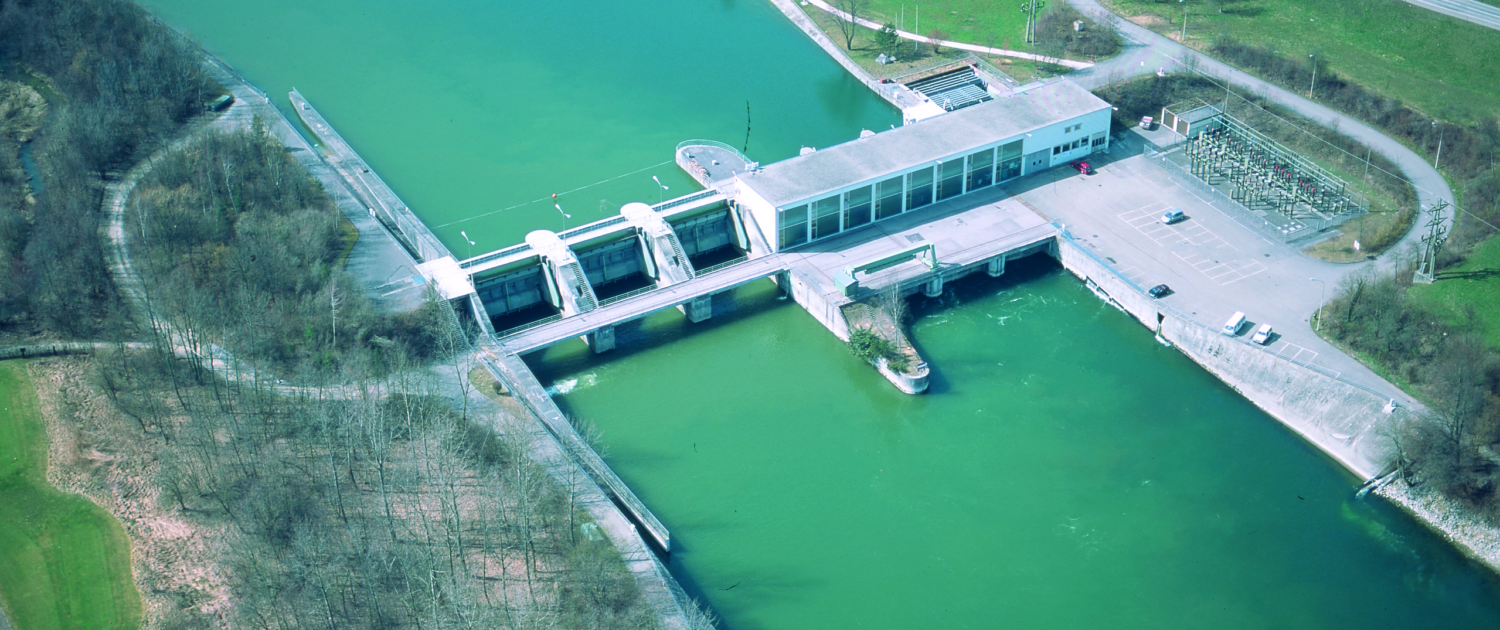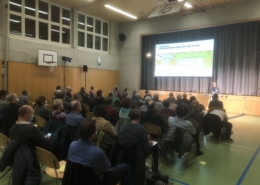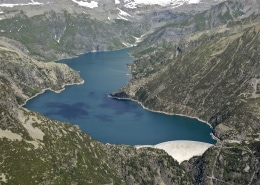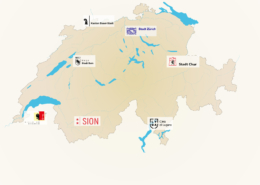EXAR study enables verification of the flood safety of 19 dams
How extreme can floods be on the Aare that statistically occur only once in 100, 1'000, 10'000 or even once in 100'000 years? This was the core question of the study "Extreme Floods on the Aare (EXAR)". The results are now available. What significance do they have for the safety of the dams in the Aare catchment area? What does this mean for the Swiss Federal Office of Energy (SFOE) as the supervisory authority for the dams? And what will happen with the findings now?
Energeiaplus asked Markus Schwager. Markus Schwager is head of the dam safety research programme and commissioned the EXAR study for the SFOE.
Energeiaplus: If a river carries an extremely large amount of water, this can also have an impact on the dams. Which ones?
Markus Schwager: In the case of extremely infrequent floods, it is conceivable that a dam could be overtopped or bypassed if the water masses cannot be diverted. If this condition persists, it can lead to a rupture of the facility in the worst case. However, in the event of an extreme flood, the weirs on the major rivers in the Central Plateau are completely open so that as much water as possible can flow out. Because hardly any more water is impounded, the effects of a possible breach are minor.
What are the findings of the EXAR study?
The report is almost 2000 pages long. In simple terms, it can be said that the results of the EXAR study correspond in principle to those of earlier studies. However, along certain stretches of the Aare, the EXAR results show a somewhat higher flood risk than previously assumed.
Can you be more specific: The study examined the flood hazard for the areas along the Aare from the outlet of Lake Thun to the mouth of the Rhine in Koblenz (AG). Which dams are affected?
Based on the EXAR results, a flood hazard can be derived for 19 dams in the Aare catchment area. Twelve of these dams are located on the Aare, three on the Saane and one each on the Orbe, Limmat, Reuss and Sarner Aa.
The Swiss Federal Office of Energy is the federal government's supervisory authority for large dams in Switzerland. What impact does the study have on the SFOE's supervisory activities?
All dams under federal supervision must already be able to demonstrate flood safety. The dams therefore meet the current safety requirements. For the 19 dams already mentioned, the EXAR results will make it possible to review the existing evidence. In a first step, the SFOE will now derive specific flood events for each of these 19 dams through further scientific work. In a second step, the SFOE will ask the operators of these dams to review the current evidence with regard to the new hazard bases.
First and foremost, dam operators must ensure that their facilities can withstand such extreme events. Do you assume that structural measures will be necessary?
It is the operators' legal duty to ensure the safety of their facilities in accordance with the state of the art in science and technology. Operators and we as the supervisory authority therefore have a duty to take account of the latest findings from the EXAR study. The implementation of these findings is a process that only begins with the publication of the study. As with any safety review, it is possible that the conclusion will be reached at the end that individual measures will be necessary on the part of the operator. However, the scope and nature of these possible measures cannot be estimated at this stage.
The EXAR study examined the effects of extreme floods on the Aare and its catchment area. However, there are also dams on other rivers. Can the findings of the EXAR study be applied to these facilities?
The findings obtained apply to the Aare catchment area. However, the methodology developed can also be transferred to other catchments. The recently launched "Extreme Floods Switzerland" project, commissioned by the FOEN and the SFOE, is intended to do precisely this for the whole of Switzerland. It will thus be possible to work out a flood hazard for many other dams in Switzerland in a similar way.
What actually distinguishes the two studies EXAR and "Extreme Flood Switzerland" from earlier flood studies?
The two new studies are based on a continuous simulation of precipitation and runoff over several hundred thousand years. This approach has two advantages over conventional approaches. Firstly, the simulation is based on a large number of weather and runoff data over the entire catchment area. This makes the results more robust than, for example, a conventional evaluation (frequency analysis) of the data from a single discharge measuring station.
Second, the long simulation duration allows the various possible combinations of environmental conditions to be represented. For example, precipitation patterns, snow depths, or soil moisture. This would not be the case with a conventional hydrological simulation of a single precipitation event.
The EXAR study was triggered by the events at Fukushima in 2011, when a tsunami flooded coastal areas and led to a major reactor accident. Afterwards, people wanted to know how high the risk of flooding was in Switzerland. However, there have been major floods in Switzerland before. Along the Aare, for example, in 1999 and 2005, why wasn't this study carried out earlier?
Floods on the Aare have been studied for a long time. One need only think of the investigations into the Kander correction in the 18th century or the planning work for the first and second Jura river corrections in the 19th and 20th centuries. The EXAR study is a further step in a long development towards understanding the flood hazard in the Aare catchment area. This step would not have been possible a few years ago, as both the models used and the necessary data processing power were not yet available.
Facts about EXAR
Under the direction of the Swiss Federal Institute for Forest, Snow and Landscape Research WSL, several Swiss and foreign universities, government research institutes and private engineering companies have been involved in the EXAR project in recent years.
In 2016, the Federal Office for the Environment (FOEN), the Federal Office of Energy (SFOE), the Federal Office for Civil Protection (FOCP) and the Swiss Federal Nuclear Safety Inspectorate (ENSI) commissioned the main study.
The results, which are now available, cover the section of the Aare from its outflow from Lake Thun to its confluence with the High Rhine at Koblenz (AG). An advisory board of internationally recognised experts has accompanied the project and confirmed the suitability of the models used and their linkage.
The interview was conducted by Brigitte Mader, Communication, Swiss Federal Office of Energy
 Luftwaffe
Luftwaffe
 1 Vote(s), Durchschnitt: 4,00
1 Vote(s), Durchschnitt: 4,00 BFEStandortsuche für geologische Tiefenlager: Bevölkerung in den drei Standortregionen über den aktuellen Stand informiert
BFEStandortsuche für geologische Tiefenlager: Bevölkerung in den drei Standortregionen über den aktuellen Stand informiert  Luftwaffe SchweizVier Gesuche für Marktprämie für unrentable Wasserkraft
Luftwaffe SchweizVier Gesuche für Marktprämie für unrentable Wasserkraft  EcoDrive Rallye, das Autofahr-Quiz mit über 1000 Preisen: clever fahren gewinnt!
EcoDrive Rallye, das Autofahr-Quiz mit über 1000 Preisen: clever fahren gewinnt!  BFEOù en sont les villes dans leur transition énergétique? (partie 2)
BFEOù en sont les villes dans leur transition énergétique? (partie 2) 
 BFE
BFE Gerry Thönen
Gerry Thönen
Dein Kommentar
An Diskussion beteiligen?Hinterlassen Sie uns Ihren Kommentar!